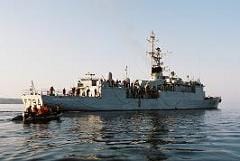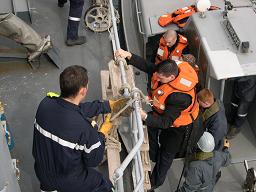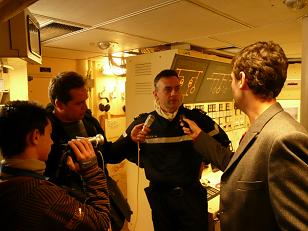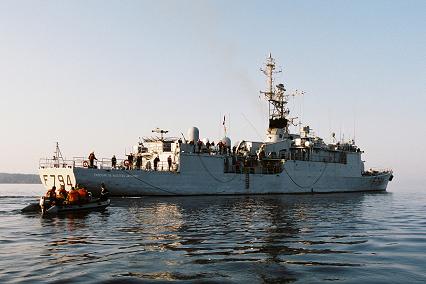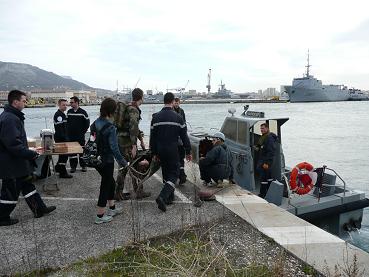
“We are French journalists,” one of the members of the small group calls out to a young marine who steadfastly points his automatic weapon at them. Not a convincing argument. “We ask to see your authority,” adds another. The young soldier remains vigilant but grabs his walkie-talkie that spits out garbled words. Moments later, the French Consul, accompanied by the second in command of a frigate, arrive and take charge of the French and foreign reporters.
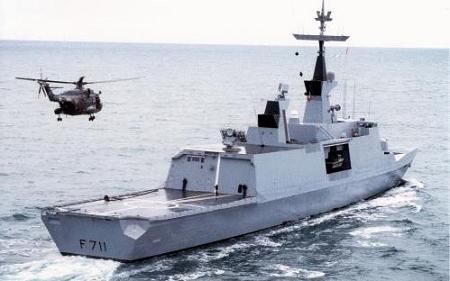
An almost unexpected scene at the Toulon naval base, which on March 12, at the end of three weeks of Operational Readiness (MECO), hosted an exercise simulating an evacuation operation of French nationals stuck in a distant country embroiled in a civil war. Scenario well planned by the Admiral’s team commanding the Naval Action Force (ALFAN), who had imagined a state “Saffron” with which France has military agreements. A state where violent uprisings fostered by a neighboring country destabilize the political power in place, threaten the security of the established French, and lead the Prime Minister to decide, from Paris, the evacuation of all European nationals who wish to leave. A scenario not far removed from the geopolitical realities of the world.
Since Operation “Baliste” in July 2006 in Lebanon, intended to evacuate French and European nationals threatened by the war between Hezbollah and Israel, the French Navy has been intensifying its reflection on the means to ensure the essential operational security of an evacuation operation while also considering the necessary media coverage demanded by the French and foreign press. A commendable concern for transparency, acknowledging the need to inform and the interest in promoting its action, but these do not necessarily mix well with the realities of the field during a conflict: reception, screening, and boarding of panicked, injured, or shocked nationals fleeing close combat with the rebel forces, who occasionally shell the port where the warships are docked. A reflection all the more urgent for the French Navy as ethnic or religious tensions, crises of sovereignty, and military saber-rattling that could endanger an ever-increasing number of expatriates and tourists in these areas continue to multiply worldwide. All punctuated by a sustained pace of global information under the watchful eye of reporters, news agencies, and television cameras.
Thus, the interest of this simulation was aimed at confronting the different levels of a military hierarchy with the necessarily increasing and disruptive demands of an international team of journalists: this team expresses the non-negotiable wish, given the imperatives and the “timing” of information, to enter the secured area, to meet and interview the survivors, to observe the conditions of screening and boarding of nationals, to question the officers about the political dimension of the French intervention, while simultaneously seeking contact with the rebels. A press always quick to suspect a mishap for each restriction imposed on its movements. These are all specks of sand that could potentially jam a perfectly operational mechanism, extensively demonstrated by the French Navy during this exercise. On this occasion, the Navy had mobilized the stealth frigate “Surcouf” and the Aviso “E.V. Jacoubet”.
Even as a republic, the “Royale” provides “big communicators” training similar to those already in place in the Army, albeit with significantly fewer personnel resources. But the question raised by this simulation was different: faced with an emergency situation and with the unexpected, a crew of about a hundred sailors must be able to manage communication directly and without external support at the site of the crisis. Based on the new generation of officers encountered during the press briefing, who, despite multiple attempts, were not embarrassed by the questions asked at any time, the Navy should not find it too difficult to succeed.
